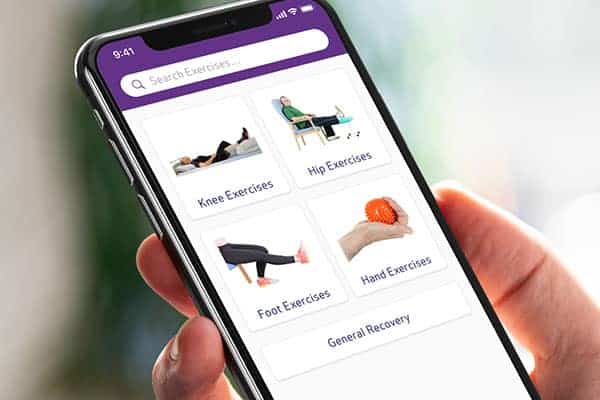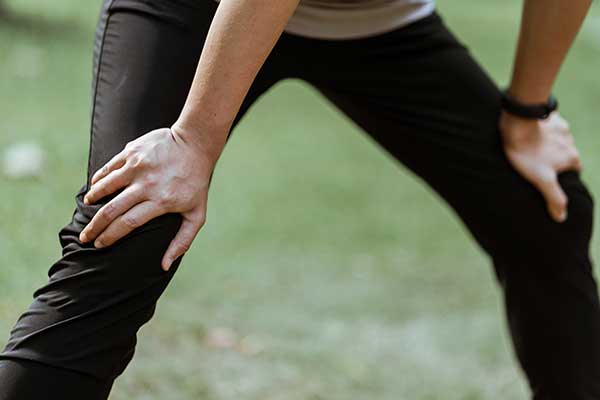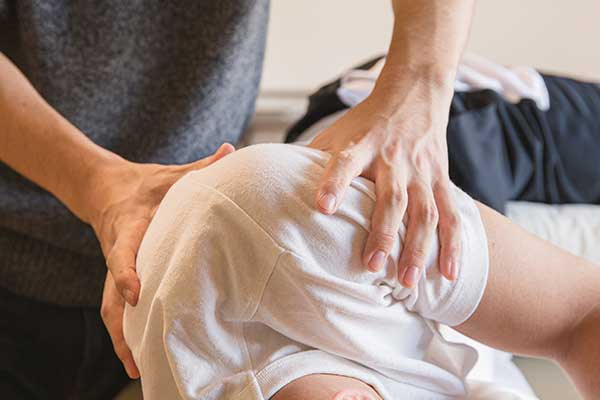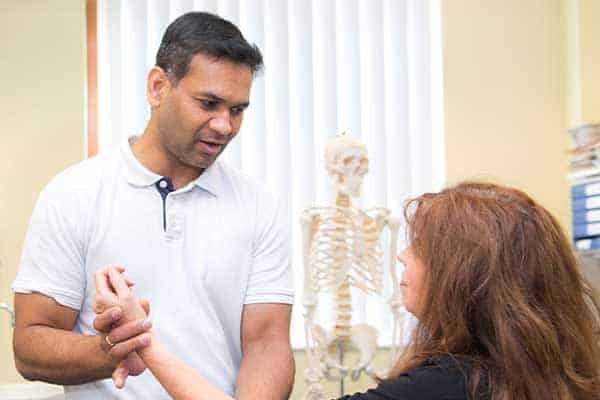Osteoarthritis of the knee is a condition where your knee joint changes and grows more painful to use.
Osteoarthritis of the knee is a normal and natural part of the ageing process. It can be treated and managed but not cured.
What causes osteoarthritis of the knee?
Osteoarthritis can affect any joint in the body. When the smooth cartilage gets worn, it becomes thinner and rougher. This can lead to more friction, stiffness and pain.
The condition develops either because your joints have seen a lot of use (typically by the time you are in your late 40s) or due to a previous injury. Joints that carry a lot of weight are particularly vulnerable, such as the knee and hip.
Other factors have been identified that may put you at increased risk of osteoarthritis, including gender (females are more at risk), genetics (you have a parent or sibling with osteoarthritis), ethnicity, obesity and smoking.
What are the symptoms of osteoarthritis of the knee?
Osteoarthritis of the knee affects different people in different ways. Some people might show severe changes on an x-ray and yet experience little or no pain. Other people may show hardly any change yet experience considerable discomfort and difficulty.
Common symptoms include:
- Sharp pain when moving, particularly when walking and climbing stairs.
- Pain that gets better with rest but can come back if one knee rests against the other.
- Stiffness and restricted movement when bending and straightening your knee, particularly first thing in the morning or after sitting still for a long time.
- Soft or hard swelling around the knee joint, sometimes with a lump at the back.
- A grating sound or sensation when moving the knee joint.
- An enlarged knee joint, possibly altering your leg alignment.
- Your knee either giving way or ‘locking’ when you put weight on it, leading to a feeling of instability.
How is osteoarthritis of the knee diagnosed?
Osteoarthritis of the knee can be diagnosed with an x-ray, which can clearly show the change in the joint space between the bones.
What are the treatment options for osteoarthritis of the knee?
If you have been diagnosed with osteoarthritis of the knee, there is plenty you can do to manage your condition.
Regular low impact exercise will keep your knee joint moving and build up the strength of the supporting muscles, which can help to reduce the load on your knee.
Another way to lessen the load is to lose weight, if you are overweight, and general aerobic exercise will also help with this.
You can also reduce the pressure on your knee joint by wearing cushioned yet supportive footwear, avoiding high impact activities and, if appropriate, using a walking aid. Your GP or physiotherapist will be able to advise you about what is best for you.
It is also important to manage the pain, as this will help you maintain an active lifestyle.
You could apply gentle heat or ice to the painful side of your knee. (Do not put ice directly next to skin as it may cause ice burn. Wrap it in a damp tea towel.)
You could try anti-inflammatory painkillers such as Ibuprofen. Some anti-inflammatory painkillers also come as creams or gels, which you can rub over your knee area. These tend to produce fewer side-effects than those taken by mouth. If you cannot take anti-inflammatory painkillers, other painkillers such as paracetamol, with or without codeine added, may be helpful. Ask your doctor or pharmacist for advice.
You may find it helps to put a pillow between your knees when sleeping on your side. Electric blankets, or warm baths before bed, have also been shown to be helpful.
If you find you are unable to manage your symptoms yourself, your doctor may offer you other treatments, including physiotherapy, injections or surgery.
What is the prognosis (outlook) for osteoarthritis of the knee?
Osteoarthritis of the knee cannot be reversed, but further degeneration may be slowed with the appropriate exercise regime and lifestyle.

Pocket Physio | Download now
Search for ‘Pocket Physio’ on the Apple App Store for iOS and the Google Play Store for Android to download for free.




